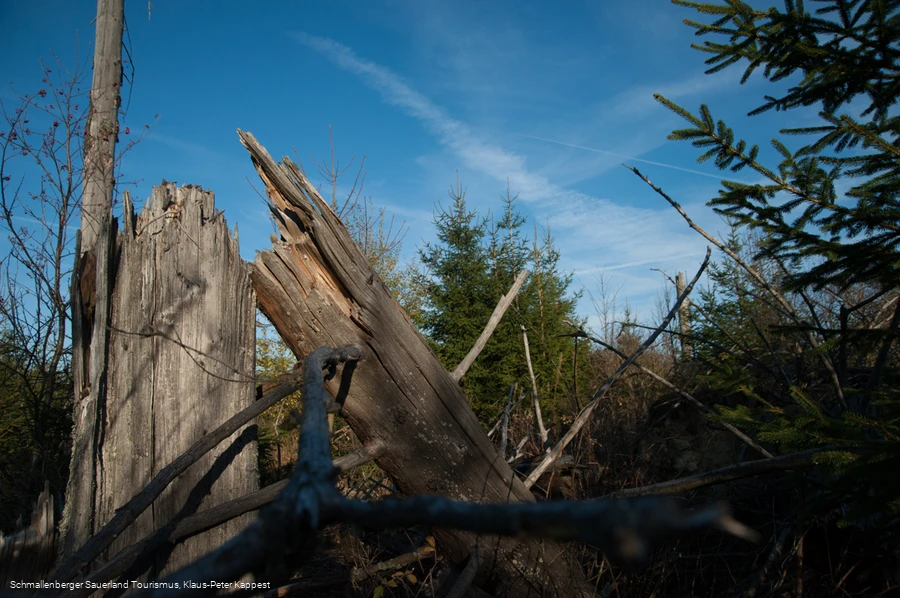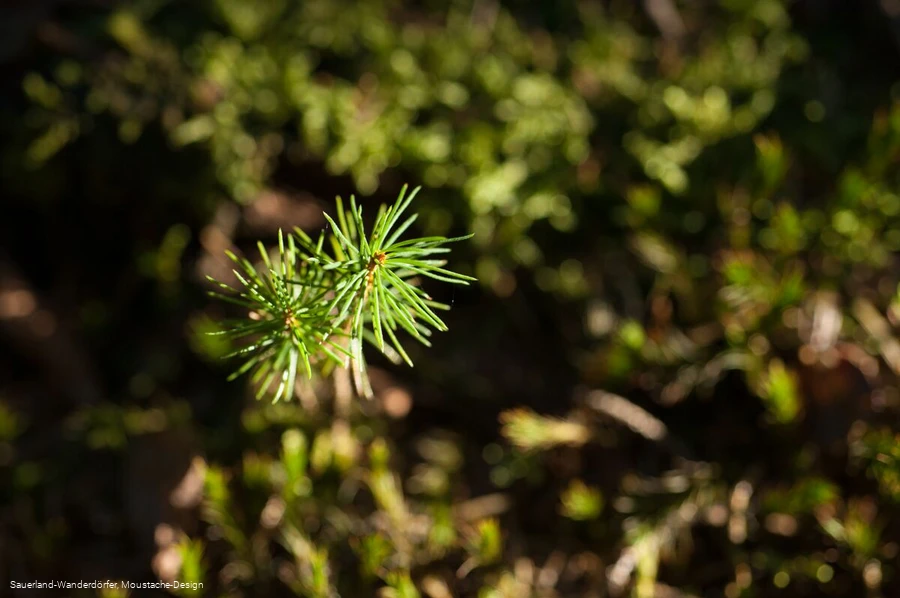Change - the 4th stage
Together, we hike along the narrow path that he used to follow on all fours. Knippertz is a ranger employed by the Landesbetrieb Wald und Holz. He and his colleagues saw a unique opportunity after the storm: "We wanted to show what happens when an area like this is left to its own devices. What grows there when people stay out of it?" They were able to convince the state forestry office to waive the timber yield for 3.5 hectares, a sum of several tens of thousands of euros. "That would not have been possible with private owners.
"The path winds for exactly one kilometer. Today, no one has to crawl; visitors can stroll through aisles, over footbridges and small bridges as if through a natural history museum. Knippertz explains to me the waves in which the storm area was recolonized. The first to take the plunge are flowers such as foxglove and wood willowherb. They are closely followed by bushes such as elderberry and blackberry. The latter is particularly aggressive, it flattens others. The whole thing is a battle for light and water. Then come the pioneers among the trees - ash, birch, Weide and, of course, spruce. A competition for the best places in the sun begins. Whoever shoots up faster outshines the others. Birches and spruces initially win the race. But now, after eleven years without axe and saw, a balance has been achieved. Knippertz's eyes light up when he looks out over the new forest from a high stand: "Isn't it a wonder how rich in plants and animal species it is?" Kyrill has caused creative chaos.
And have the forest owners learned anything from the storm damage? Knippertz shakes his head. Then he replies: "Probably not all of them, we still have some convincing to do! We advised reforesting with tree species suited to the location, such as beech. There was even funding for this. But many people opted for fast growth. So spruce again - with a high risk." The next hurricane is sure to come.
As we walk on, I ask myself what makes the Kyrill-Pfad a place of soul. It inspires me to think about death and new beginnings. About our own transience. About how short the human lifespan is compared to the long breath of nature. About the fact that some things that at first glance seem like the end and the end are in fact transformation, a transition, a wink at eternity. Knippertz points to a trunk at our feet. "Another five years and it will be completely rotten. Inside, tree fungi are at work decomposing it." He points to a plate-sized fungus on the outside of the wood: "This is just the visible fruiting body of a gigantic network inside." Mosses and fungi, sun and rain are the tireless transformers. They turn trees into soil and soil into fertile ground for future trees.
At the end of the trail, the ranger leads me to his personal highlight in the open-air gallery. He points to a spruce lying on the ground. The bark on the top has burst open, "sunburn", he explains. But the crown of the tree consists of dark green and densely needled branches, with light green sprouts and buds at the tips. "It still wants something," says Stefan Knippertz, "this tree here really wants to live. And it will definitely make it."
END

